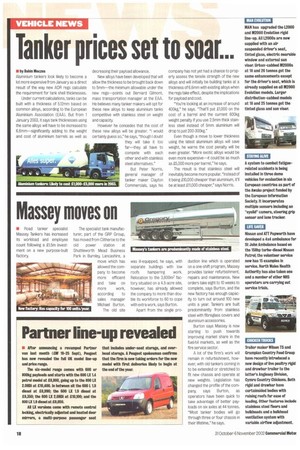Tanker prices set to soar...
Page 18

If you've noticed an error in this article please click here to report it so we can fix it.
• by Robin Moues Aluminium tankers look likely to become a lot more expensive from January as a direct result of the way new ADR rags calculate the requirement for tank shell thicknesses.
Under current calculations, tanks can be built with a thickness of 5.12mm based on common alloys, according to the European Aluminium Association (EAR). But from 1 January 2003, it says tank thicknesses using the same alloys will have to be increased to 6.6mm—significantly adding to the weight and cost of aluminium barrels as well as decreasing their payload allowance.
New alloys have been developed that will allow the thickness to be brought back down to 5mm—the minimum allowable under the new rags—points out Bernard Gilmont, mass transportation manager at the EU. He believes many tanker makers will opt for these new alloys to keep aluminium tanks competitive with stainless steel on weight and capacity.
However he concedes that the cost of these new alloys will be greater. "I would certainly guess so," he says, "though I doubt they will take it too far—they all have to compete with each other and with stainless steel alternatives."
But Peter Norris, general manager of tanker maker Clayton Commercials, says his company has not yet had a chance to properly assess the tensile strength of the new alloys and will initially be building tanks at a thickness of 6.6mm with existing alloys when the rags take effect, despite the implications for payload and cost.
"You're looking at an increase of around 4004," he says. "That'll put £1,000 on the cost of a barrel and the current 600kg weight penalty if you use 2.5mm thick stainless steel instead of 5mm aluminium will drop to just 200-300kg."
Even though a move to lower thickness using the latest aluminium alloys will save weight, he warns the cost penalty will be even greater. "More exotic alloys would be even more expensive—it could be as much as £5,000 more per barrel," he says.
The result is that stainless steel will inevitably become more popular. "Instead of it being £10,000 cheaper than aluminium, it'll be at least £11,000 cheaper," says Norris.




























































































































































